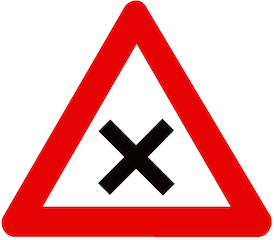- Daily & Weekly newsletters
- Buy & download The Bulletin
- Comment on our articles
Biking in Brussels, the legal way
Now that Belgium is gearing up (please excuse the pun) to build 15 new cycling superhighways by 2025 we can expect more and more people to be commuting to and around the city on two wheels.
But whether you’re thinking about a daily commute or just planning a ride for Brussels’ Car-Free Sunday coming up on 21 September, you should be aware that Belgium takes cycling seriously, especially when it comes to following the rules.
While Brussels isn’t the biking haven that some of the Flemish cities are, like Ghent, Antwerp and Leuven, knowing the laws of the land will both help you avoid occasionally hefty fines and, more importantly, keep you safe on the roads.
The basics of bicycles
The first thing you need to be a Brussels bicyclist is, well, a bicycle. There are plenty of places to buy new and used bikes, from the state-of-the-art to the duct-taped-together.
But all bicycles new or old, have to be equipped certain features. These include front and rear brakes, a working bell that can be heard from 20 metres away, and side and pedal reflectors. Also, white front and red back lights must be used after dusk or in times of low visibility. These should be on the bicycle, but could also be attached to the front and back of your clothing.
Helmets and reflector vests are not obligatory in Belgium, although many would say they are smart. They are also quite popular, not seen as nerdy as they are in some other cities. Particularly popular are reflector vests that shame motorists with slogans reading things like “One car less”.
The do’s and don’ts of biking
The do’s of biking in Brussels are simple: follow the traffic laws. If there is a dedicated bike lane on the street or sidewalk, you are required to use it. If there is no bike lane, then you must bike on the right.
Once you’re on the road, there are also certain things you are not allowed to do whilst biking in Brussels, such as:
- not holding the handle bars
- not placing ones feet on the pedals
- being towed by another person
- riding with an animal on a leash
- riding with another person on the back of the bicycle (unless it is a child in a child’s seat)
Also, be aware that just as a pedestrian, you are required to always carry your Belgian identity card or residence permit with you when bicycling anywhere in Belgium.
Above all, make sure you listen to authorities. If a police officer or other person in an official-looking jacket is standing in the middle of the street waving her arms or signalling with a red torch, do what she says. Not following the traffic instructions of a police officer is a serious offense laden with heavy fines, whether you’re on four wheels or two.
Know your signs
Bicycles in Belgium are considered vehicles and for the most part must follow the same traffic rules as motored vehicles. So it’s important that cyclists know the traffic signs.
The University of Leuven offers a useful guide to biking in Belgium that gives an excellent review of Belgian traffic laws and road signs. If you’re from a European country and you’ve taken a driver’s test, then you likely know what all the signs mean. However, if you come from outside the EU, some signs might be unfamiliar.
One important sign that you’ll see frequently on Belgian roads is the “right-of-way to the right” sign (pictured).

Whether on a bike or in a car, when you see this sign, it means that those coming from the street to your right have the right-of-way, even if you’re on the principle road. It also means that cars coming from the right might not be slowing to look for two-wheeled traffic on the main road, so riders should be vigilant.
The biggest exception to the traffic rules that bicycles get is Brussels’ convenient habit of allowing cyclists to bike in the opposite direction of traffic on one-way roads. For this to be possible, there must be a sign specifically indicating that bicycles are allowed, for example like this:

But with so many drivers coming from cities and countries that don’t have this tradition, cyclists should aware that cars might not be expecting them to come from the opposite direction. And you might occasionally get a dirty look from a driver who thinks you’re breaking the rules.
Photo courtesy ECF/Flickr Commons


















Comments
I wish the police would actually enforce the rules about having lights after dark - it is infuriating how often I am faced with cyclists with NO lights even after it is full dark.
The other day I watched 3 cyclists completely ignore red traffic lights along General Jacques - didn't even low down!
Be aware if like my son, you are a cyclist legitimately crossing on a cycle path with a green light and are struck by a car illegally turning right and not stopping to allow you to cross. Even if your are hit by this car your bike is damaged and you have to go in an ambulance to hospital. That the drivers insurance companies will refuse to pay your put of pocket expenses like bike repair, hospital bills, even when the police state it was entirely the fault of the driver. This is despite persistent phone. Alls from a friend whose multi lingual. Rang them repeated. So I suggest everyone who owns a cycle, buys a cycle insurance policy to cover you and your family so you don't suffer the same fate.